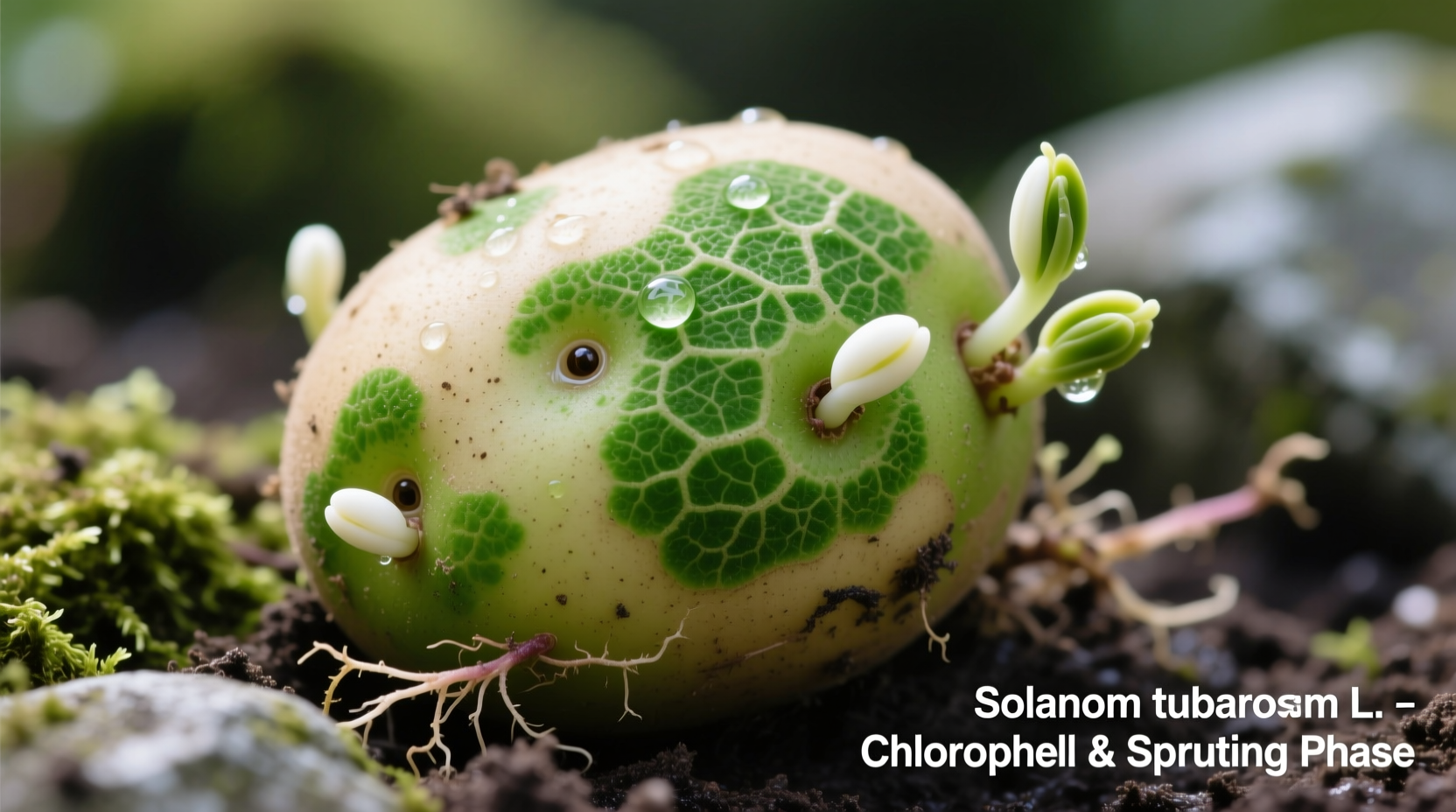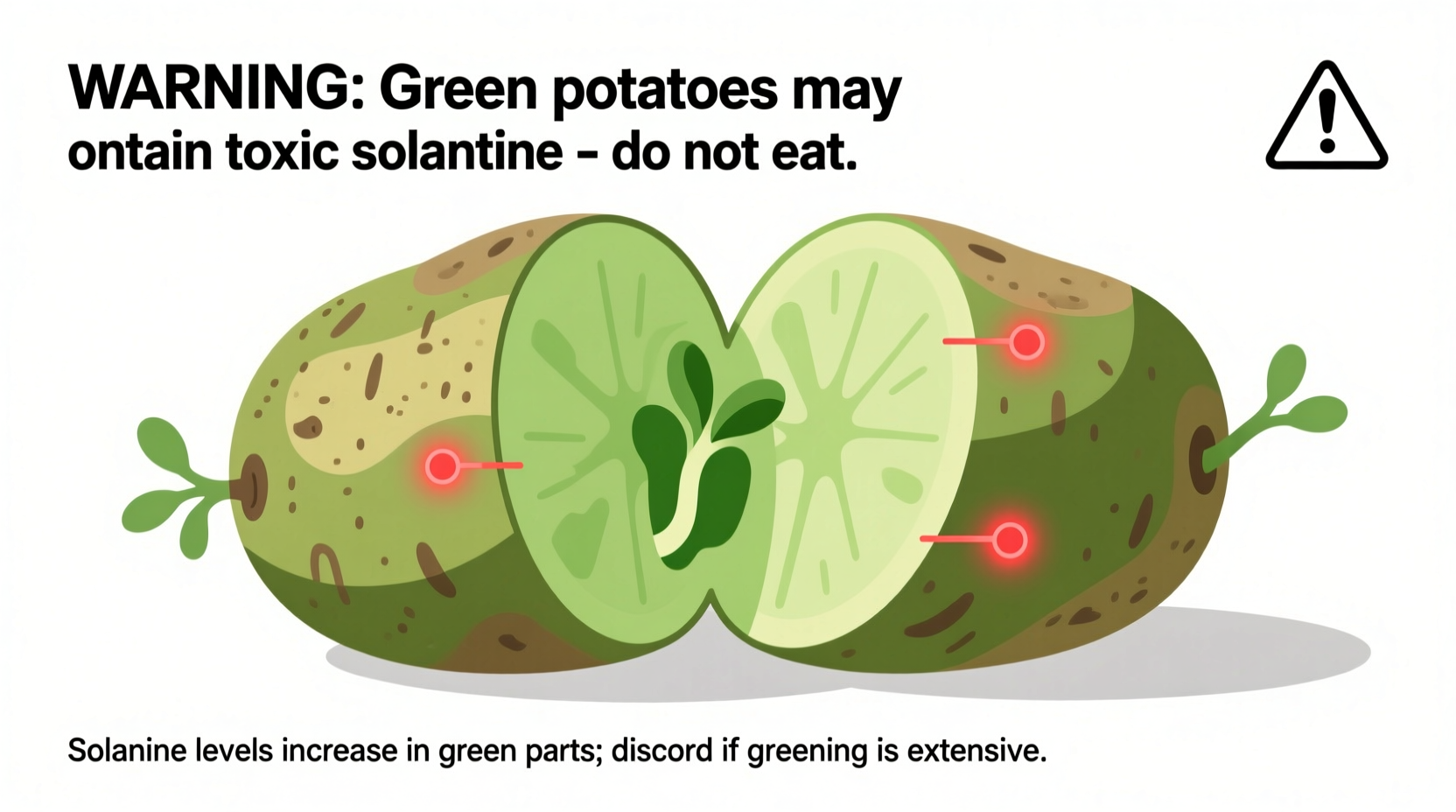Why Potatoes Turn Green and What It Means for Your Health
When you discover green patches on your potatoes, it's not just an aesthetic issue—it's a serious food safety warning. This green tint develops when potatoes are exposed to light, triggering chlorophyll production. While chlorophyll itself isn't harmful, its presence signals increased concentrations of toxic compounds called glycoalkaloids, primarily solanine and chaconine.
The Science Behind Potato Greening
Potatoes naturally produce these defensive compounds to protect against pests and disease. Under normal storage conditions, glycoalkaloid levels remain low and safe for consumption. However, when tubers are exposed to light (especially sunlight or fluorescent lighting), they initiate photosynthesis—resulting in both the green chlorophyll you see and a simultaneous increase in toxin production.
According to research published in the Journal of Agricultural and Food Chemistry, solanine levels can increase from a safe baseline of 20-50 mg/kg to potentially dangerous concentrations exceeding 200 mg/kg within just 48 hours of light exposure. The U.S. Food and Drug Administration considers potatoes with solanine levels above 200 mg/kg unsafe for human consumption.
How Much Green Is Too Green?
Many home cooks wonder if they can simply cut away the green portions and eat the rest. Unfortunately, this approach is unreliable. While the green color is most concentrated near the surface, glycoalkaloids can penetrate deeper into the potato tissue. The National Institute of Food and Agriculture explains that any visible green coloring indicates toxin levels that may exceed safe thresholds.
| Condition | Solanine Level (mg/kg) | Safety Assessment |
|---|---|---|
| Fresh, properly stored potato | 20-50 | Perfectly safe |
| Slight surface greening | 75-150 | Potentially unsafe for children |
| Moderate greening | 150-250 | Unsafe for most people |
| Extensive greening with sprouting | 250-1000+ | Highly dangerous |
Symptoms of Solanine Poisoning
Consuming green potatoes can lead to glycoalkaloid poisoning, with symptoms typically appearing 8-12 hours after ingestion. The Centers for Disease Control and Prevention reports that mild cases may include:
- Nausea and vomiting
- Stomach cramps and diarrhea
- Headache and dizziness
More severe cases, often resulting from consuming potatoes with very high solanine levels, can cause:
- Neurological disturbances
- Fever and rapid pulse
- In extreme cases, hallucinations or paralysis
Children are particularly vulnerable due to their smaller body mass. The FDA notes that a child weighing 50 pounds could experience symptoms after consuming just one medium-sized green potato with moderate greening.
What to Do With Green Potatoes: Practical Safety Steps
When you discover green potatoes in your pantry, follow these evidence-based steps:
- Assess the extent of greening - If any part shows green coloring, assume toxins are present throughout
- Do not attempt to salvage - Peeling removes only surface toxins; significant amounts may remain in the flesh
- Discard immediately - Place in sealed container before disposal to prevent accidental consumption by others
- Never feed green potatoes to pets - Solanine affects animals similarly to humans
For potatoes with very minor surface greening (less than 5% of surface area), the University of Illinois Extension suggests you might consider removing at least 1/8 inch beneath all green areas, but emphasizes that complete safety cannot be guaranteed. When in doubt, throw it out.
Preventing Potato Greening: Storage Best Practices
Proper storage is your best defense against potato greening. Follow these guidelines from the USDA Agricultural Research Service:
- Store potatoes in a cool, dark place between 45-50°F (7-10°C)
- Use opaque containers or paper bags—never clear plastic bags
- Maintain humidity around 90% to prevent shriveling
- Keep away from onions, which release gases that accelerate sprouting
- Check stored potatoes weekly and remove any showing signs of greening
Refrigeration is not recommended for long-term storage, as cold temperatures convert starch to sugar, affecting flavor and cooking properties. The ideal storage location is a basement or pantry away from windows and artificial light sources.

Special Considerations for Vulnerable Populations
Certain groups face higher risks from solanine exposure. Pregnant women should be particularly cautious, as research in Food and Chemical Toxicology suggests glycoalkaloids may affect fetal development at high doses. Individuals with compromised immune systems or digestive disorders may experience more severe reactions to lower toxin levels.
The American Journal of Clinical Nutrition reports that solanine can interfere with acetylcholinesterase, an enzyme critical for proper nervous system function. While healthy adults might tolerate small amounts without symptoms, repeated exposure to even moderate levels could potentially cause cumulative effects.
When Green Potatoes Become an Emergency
If someone consumes a significant amount of green potatoes and experiences severe symptoms like difficulty breathing, extreme weakness, or neurological symptoms, seek immediate medical attention. Call Poison Control at 1-800-222-1222 in the United States for specific guidance.
Medical professionals typically treat solanine poisoning with supportive care, as there is no specific antidote. Treatment focuses on managing symptoms and preventing complications while the body eliminates the toxins.
Common Misconceptions About Green Potatoes
Several myths persist about green potatoes that could put consumers at risk:
- "Cooking destroys the toxins" - False. Solanine and chaconine are heat-stable and not significantly reduced by boiling, baking, or frying
- "Only the green parts are dangerous" - Misleading. Toxins can extend well beyond visible green areas
- "Organic potatoes don't produce solanine" - Incorrect. All potato varieties produce these natural defenses
- "A little bitterness is normal" - Warning sign. Bitter taste indicates high glycoalkaloid levels
The European Food Safety Authority has established that concentrations above 100 mg/kg require consumer warning, while levels exceeding 200 mg/kg warrant removal from the food supply. These thresholds exist because individual sensitivity varies significantly.











 浙公网安备
33010002000092号
浙公网安备
33010002000092号 浙B2-20120091-4
浙B2-20120091-4